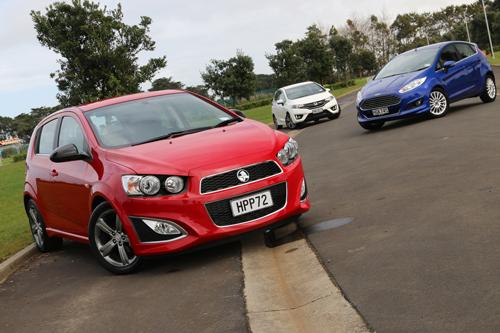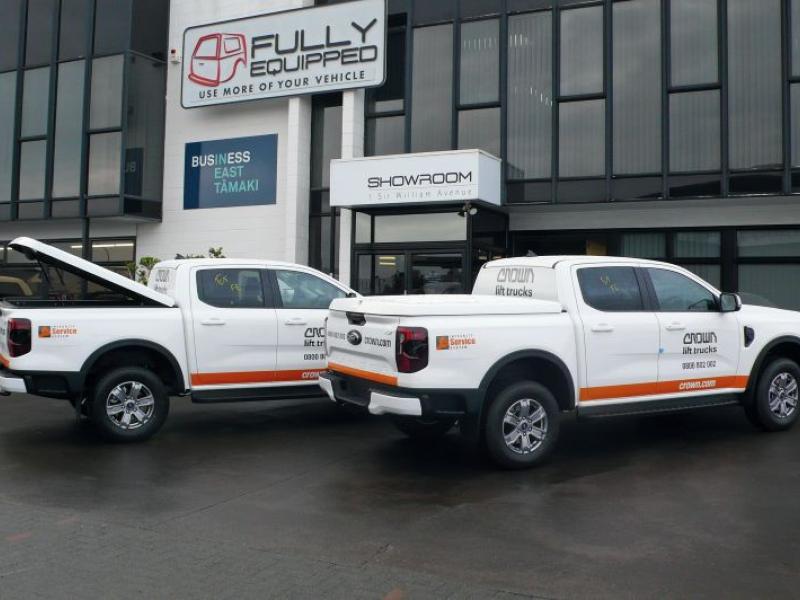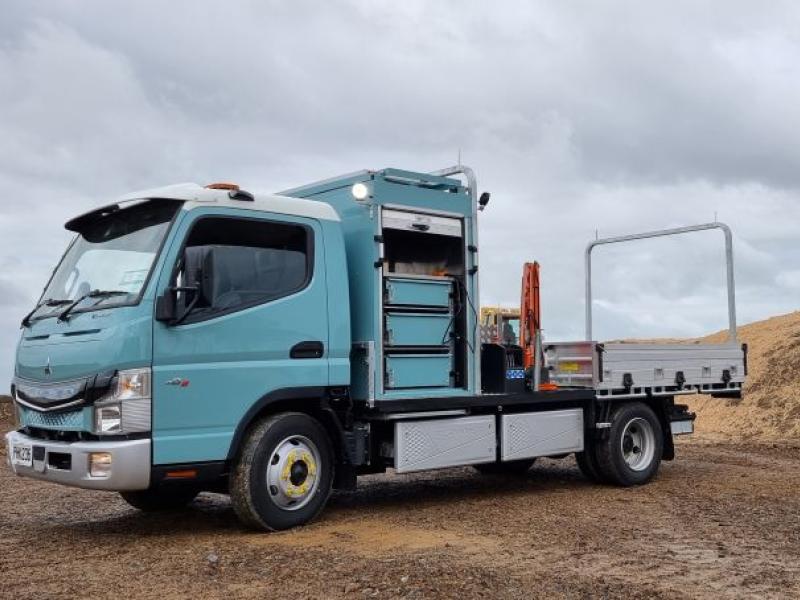With downsizing the rule rather than the exception these days, it’s little wonder that small cars are being offered with features previously the province of the large car – or even the luxury car – segment. We compare three popular models with lots of features, plus more than a hint of sportiness. Report John Oxley, photography Damien O’Carroll.
The brief was simple. Compare three cars which are similarly priced, which have similar features, and which have “Sport” or “RS” in their names. All should be automatics, and engine capacity should not exceed 1.5-litres.
The second brief was that the test route should include a fair bit of town driving as well as motorway and country roads.
This was the easiest part of the exercise as we have a pretty well-trodden test route that starts us out in Auckland’s Newmarket district, then wends its way through the suburbs towards Auckland Airport, and then off into the country via Clevedon to and from Maraetai Beach – with diversions and repeat runs as required to ensure we all drive the same twisty bits in each car.
Choosing the cars was more difficult, but we finally ended up with a pretty interesting selection; the three-cylinder turbo-charged 1-litre Ford Fiesta EcoBoost Sport, the 1.4-litre turbo-charged Holden Barina RS, and the normally aspirated 1.5-litre Honda Jazz RS.
Of the three, the Ford was most expensive, at $28,840, with the Barina $850 less on $27,990, and the Honda lowest priced at $26,900.
All three come very well equipped, as mentioned, with the Ford and Holden even getting some leather trim on the seat facings (in fact the Holden has suede, too), while the Ford has its award-winning EcoBoost engine, as well as Sync connectivity.
Of the three the Holden has the most powerful engine, but it’s also the thirstiest; the Ford is most economical, but only just pips the Honda to the post.
The Honda, meanwhile, is a new model, with stiffer bodywork and new suspension, new styling, weight reduction, longer wheelbase and bodywork, more interior space, and new styling. For the first time satnav and reversing camera are standard across the whole Jazz range.
Our judges were two motoring journalists and a former motor industry marketing manager, and it was interesting to see that our female judge was looking just as hard at the ride and handling characteristics as the menfolk, while putting her own spin on the features, and especially on the versatility of each of the vehicles in a real world situation.
The judges were asked to fill in test sheets outlining what they felt about each vehicle, and then at the end of the test were asked to rank them in 10 categories, each vehicle being scored on the basis of first, second and third in each category.
We believe this is a fairer system than giving, say, a score out of 10, as it alleviates any possibility of unfair weighting which could skew the results.
The categories are:
- Overall fitness for purpose.
- Exterior styling and design.
- Interior design and comfort.
- Fit, finish and quality.
- Ride and refinement.
- Powertrain performance.
- Road holding and handling.
- Safety rating.
- Fuel economy.
- Value for money.
We had been worrying about the weather all week as we were locked into our test date, and couldn’t change it even if the weather turned really bad. And the forecast was, to say the least, miserable!
However, we must have done something right, for, low and behold, the sun blessed us with a visit – although we kept a weather eye on the burgeoning clouds all day.
THIRD PLACE: HOLDEN BARINA RS
The RS is the top of the Barina range, and so gets more kit than anything else in the line-up. As a sporting model it also looks the part, with an aggressive stance thanks to its lowered and modified suspension, nice alloys, and a nice grille, although the four round headlights perhaps age it.
The dashboard is modern – maybe a bit TOO modern for some – with a motorcycle-inspired instrument cluster that sees a large digital speedo with an analogue rev counter on its left, and inset readouts for fuel, and from the on-board computer, as well as a gear position indicator.
The sports seats offer good lateral support, with the leather and suede seat facings attractive, and complemented by nice red hand stitching, which continues through to the leather-rimmed steering wheel and gear lever.
However, some of the finishes were felt to be a bit “low rent” by our testers. “A bit plasticky on the centre console and doors,” said one.
However, the car was roomy, with plenty of space in the back, and the boot has the versatility of a board which can be used to hide stuff from prying eyes, or lowered to increase boot space.
If this was done, though, the load area had a step when the 60/40 split seats were folded forward.
The seating position was generally felt to be comfortable, but with no height adjustment a little high for our tallest tester. But there’s tilt and reach adjustment on the steering wheel.
However, once settled our testers all made good use of the sound system and the excellent MyLink setup, which operates via the seven inch touch screen and offers built-in app. technology such as a satnav programme (which is downloaded and played via your Smartphone), and Bluetooth audio streaming and phone.
The feature list is long, with aircon, electric windows and mirrors, sports seats, cruise control, satellite controls on the steering wheel, the biggest alloy wheels in the group, at 17 inch (the others have 16 inch), automatic headlights, trip computer, aluminium sports pedals, and special floor mats.
On the road our testers had mixed feelings. One thought the ride was “slightly brittle around town”, while the other two felt the car was noisy, especially when driven hard.
The gearbox – it’s a normal torque converter automatic – was praised for its smoothness, and the speed of the gear change, “but the stupid shift buttons on the gear knob ruin the fun”.
Handling was felt to be adequate, although one tester said the car felt “heavy and clunky”, while another felt it had a well-controlled body.
Everyone was generally happy with engine performance, and despite being the heaviest in the group, the Barina was still quickest off the mark, albeit at a cost in terms of fuel consumption.
With a 6.5L/100km average it uses more than a litre every 100km than the Fiesta, and almost as much more than the Jazz, and unlike the others, which can run happily on 91 octane petrol, it’s recommended that premium 95 octane fuel is used, increased running costs even more.
Perhaps these words from one tester sum up the Barina RS best: “Looks the part and goes well too. Nothing startling, but very pleasant, and quite fun”.
SECOND PLACE: FORD FIESTA SPORT
The Fiesta Sport is an enigma, for it’s got one of the smallest engines on the market, but with 92kW and a torque band that starts way down the rev range it offers excellent performance.
In fact its one-litre EcoBoost engine has once more been awarded “Best engine in the world” status by a global panel of journalists, and it really shows when you get behind the wheel.
The enigma doesn’t stop with the remarkable power (and economy) of that tiny engine, for to be quite frank, the Fiesta Sport doesn’t look sporty at all, despite having an Aston Martin inspired grille. Yet it was not that far behind the Barina RS on acceleration, testament both to the EcoBoost engine’s high and linear torque curve, plus the fact that the Fiesta is a lot lighter.
And when you get onto a tight and twisting road, there is no doubt about the Sport’s prowess, with a level of agility and precision that is beaten only by its more powerful, and overtly sporting, brother, the Fiesta ST. Indeed, the Sport gets the same suspension tweaks as the ST, but has less rubber on the road.
“Absolutely brilliant,” raved one tester. “The basic Fiesta platform is so good that they are all huge fun. So forgiving and predictable, yet eager and sharp.” Another commented: “The Fiesta may be getting a little old [a new one is due some time next year - Ed.], but it’s still the best”.
The engine also came in for similar praise: “The brilliant little engine gives everything it has. Great little growl, too. Flexible and surprisingly torquey”.
However, all three testers complained about the slowness of the double clutch gearbox on downchanges, while one didn’t like the manual mode gear change button on the gear lever.
All three testers felt the interior was dated compared to the other two cars in the group, although they all liked the seating position, despite having neither seat height nor steering column reach adjustment, though it does have rake adjustment.
As with the Barina the interior came in for a bit of stick for its hard surfaces on the dashboard and doors, but all liked the comfort of the seats, and especially their leather inserts and white stitching, offset by the black Japanned look of the centre console and the door pulls.
The controls were generally well laid-out, although it was felt they are overly fussy and appear quite complicated – though in use they are in fact intuitive and simple.
The Sync voice-operated commands generally work well, especially if you take time to work out what you’re supposed to say!
Features include cruise control, Bluetooth phone and streaming, with a 4.2 inch multi-functional screen that’s operated by switches, not touch, plus an excellent Sony sound system with eight speakers, and there’s a trip computer.
The Fiesta also has electric windows and mirrors, and air conditioning., and satellite controls on its leather-rimmed steering wheel.
The Fiesta also has most airbags as it includes one to protect the driver’s knee, and the car gets a hill start assistance programme; a good feature with double clutch gearboxes, which can be quite iffy at low speeds, and especially when setting off on hills.
Although it’s got a fairly spacious boot, access is the worst of the group, and you’d have to lift your granny’s suitcase over quite a high lip to get it in there.
“A surprisingly excellent little car that was way more fun than I was expecting,” said one tester, while another exclaimed "the oldest and worst interior, and the best engine and chassis.”
FIRST PLACE: HONDA JAZZ RS
You can be forgiven if you’re a bit confused by the new Honda Jazz line-up, with an S as the entry level, and RS, RS Sport and RS Mugen, but with the exception of the first one, they are all specification, trim and styling variations on the same theme, and with the same engine, gearbox and suspension.
Our test vehicle was the lowest-priced of the “RS” group, but also the most honest, with a face its mother WOULD like, and none of the styling excesses of the other two.
In terms of trim and fittings, it’s the most modern (as to be expected; it’s only just been launched!), with a high tech interior that includes a seven inch LCD touchscreen for the audio system and climate aircon/heating, with logical touch controls or Smartphone-like “swipe” shortcuts.
The screen also operates the satnav system, and monitors the reversing camera, and if you’re hanging around waiting for the kids to get out of school, you can also play a video using your phone, tablet, an SD card, or the USB.
The Jazz is also the only one in the group with proximity key locking and unlocking – with, of course, a pushbutton starter!
The exclusivity doesn’t stop there, for in addition to having the most boot space with the seats folded, and easiest boot access, the Honda also has its famous “Magic” seats. In addition to being flopped forward, the rear seats can fold up much like cinema seats, so you can have a huge space behind the front seats to carry heavy objects – or even a couple of large dogs – without mucking up the seats, as the floor of the car is the base of your “Magic” area.
Talking of seats, our testers found the seating position comfortable, although there wasn’t quite as much lateral support as with the other two cars in the group.
The driver’s seat is height adjustable, and there’s tilt AND reach adjustment of the steering wheel, so it’s easy to get the right driving position. “Very comfortable, and control layout good,” said one tester.
The Honda has the largest capacity engine (by 100cc over the Holden) but it’s not turbo-charged. However, it DOES have Honda’s latest Earth Dreams technology, and this results in a power output mid-range between its two competitors in this group.
When you open the bonnet it’s also the most attractive engine of the three, and the easiest to do routine maintenance.
However, on the downside it’s attached to a continuously variable transmission (CVT), although Honda has done a lot of work to get rid of the CVT’s worst points by using a torque converter, and widening the range of the ratios.
Reduced friction in the CVT also helps the Honda’s remarkable fuel economy. And a hill start programme is included to stop the vehicle rolling back when setting off on a hill as there’s not enough torque converter “creep” to hold the car without it.
In terms of safety, the Honda is the only vehicle in the group to get City Brake Assist, which uses a laser radar unit to detect potential low-speed collisions (between 5km/h and 30km/h, and first warns the driver, and will apply the brakes if there’s no reaction.
Our drivers liked the interior trim, and especially the stitching on the dash, gear lever, and cloth seats, and there were soft-touch surfaces on the dashboard and the doors armrests.
The leather-rimmed steering wheel had satellite controls for phone, audio system, and cruise control, as well as paddles for changing gear in manual mode.
On the road our testers were all happily surprised by the improvements Honda has made to the Jazz’s handling. “Way better than the previous Jazz; actually quite a capable little car,” wrote one. “Great handling, but felt a bit of body roll,” said another.
The engine was “quite responsive, with good pickup”, and the gearbox “quite good for a CVT”.
In summary: “A surprisingly excellent little car that was way more fun than I was expecting,” said one tester. And another: “An enjoyable drive; I felt totally in control even when going fast”.






